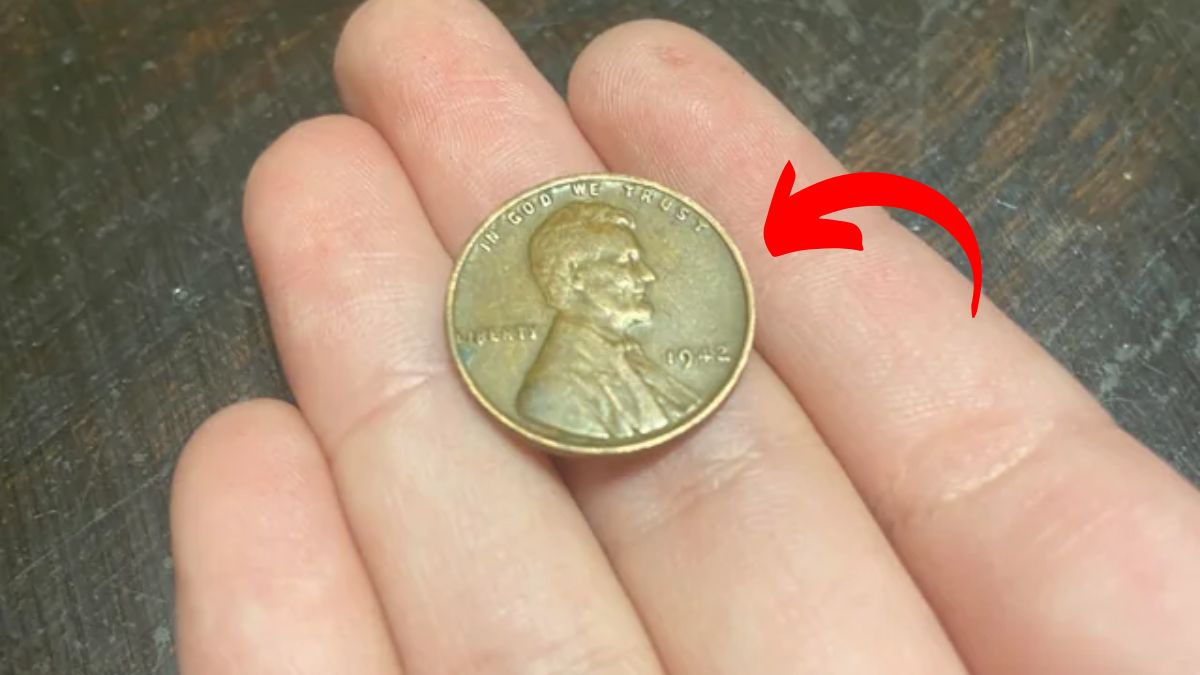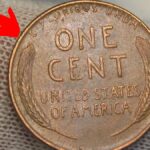The Lincoln Wheat Penny, a coin that has been part of American history for over a century, continues to capture the attention of collectors and numismatists worldwide. While this penny was originally designed for everyday use, one specific example of the coin has become the talk of the town, with a remarkable value of $25 million. What makes this penny so special, and how can a coin still in circulation achieve such an astronomical price? Let’s explore the fascinating story behind this rare find.
The Lincoln Wheat Penny: A Quick History
The Lincoln Wheat Penny was first minted in 1909 to commemorate the 100th anniversary of President Abraham Lincoln’s birth. Featuring the image of Lincoln on the obverse and two stalks of wheat on the reverse, the coin quickly became an iconic symbol of American currency. The Wheat Penny was produced until 1958, when it was replaced by the Lincoln Memorial Penny.
Although it was a widely circulated coin, the Lincoln Wheat Penny holds a special place in the hearts of collectors due to its historical significance and its connection to one of America’s most beloved presidents.
The $25 Million Penny: The Rare Coin
While most Lincoln Wheat Pennies are worth only a few cents, one coin stands out among the rest. A particular 1943 bronze Lincoln Wheat Penny, one of only a few known to exist, has been valued at an astonishing $25 million. This rare penny is not just valuable because of its age or its historical significance, but because it was accidentally struck with the wrong metal.
During World War II, the U.S. government faced a shortage of copper and began using steel to mint pennies. However, a few pennies were mistakenly struck using bronze planchets, the original material for the Wheat Penny. This error made the 1943 bronze Lincoln Wheat Penny a unique and highly sought-after collector’s item.
Why is the 1943 Bronze Lincoln Wheat Penny So Valuable?
The primary reason for the high value of the 1943 bronze Lincoln Wheat Penny is its rarity. Out of the billions of pennies minted in 1943, only a few bronze coins were accidentally struck. The error went unnoticed at the time, and the bronze pennies that were mistakenly created were quickly removed from circulation. As a result, the 1943 bronze Lincoln Wheat Penny is considered one of the rarest coins in existence.
In addition to its rarity, the coin’s historical significance adds to its value. The 1943 bronze penny is a reminder of a time when the U.S. government had to adapt to wartime conditions and make adjustments to its coinage. Collectors are drawn to the coin not only for its rarity but also for the story it tells about America’s wartime economy.
How Did the Penny End Up Worth $25 Million?
The 1943 bronze Lincoln Wheat Penny has changed hands several times over the years, with each transaction pushing its value higher. In 2010, a 1943 bronze penny sold for $1.7 million at an auction. Since then, the value has continued to rise, with the current estimated worth of $25 million based on its rarity, historical significance, and the growing demand among collectors.
The coin’s price is also influenced by the interest in rare coins as investments. Many collectors see rare coins like the 1943 bronze penny as valuable assets that can appreciate in value over time, making them a smart addition to a collection or an investment portfolio.
The 1943 Bronze Penny: Still in Circulation
Despite its immense value, the 1943 bronze Lincoln Wheat Penny is still in circulation, although it is incredibly rare to find one in everyday transactions. Most people are unaware that they could be holding a coin worth millions, as these rare pennies are often hidden in private collections or are sold through specialized auctions.
However, for the average person, the 1943 bronze penny remains an elusive treasure. Many collectors spend years searching through their coin collections or even combing through change in the hopes of stumbling upon one of these rare coins.
How Can You Spot a 1943 Bronze Lincoln Wheat Penny?
If you want to check if you have one of these valuable pennies, the first step is to look for the year “1943” on the coin. The 1943 bronze Lincoln Wheat Penny has a distinctive look, with a coppery color rather than the usual steel gray of the 1943 steel pennies. The coin should also have a clean, sharp design on both the obverse and reverse sides.
If you believe you have found a 1943 bronze penny, it is important to have it professionally authenticated by a certified numismatist or a reputable coin dealer. This will ensure that the coin is genuine and not a counterfeit.
The Fascinating World of Coin Collecting
The story of the 1943 bronze Lincoln Wheat Penny highlights the excitement and potential rewards of coin collecting. While most pennies are worth just a few cents, some rare coins can fetch millions of dollars at auction. Whether you are a seasoned collector or someone who simply enjoys learning about history, the world of rare coins offers a fascinating journey.
As the 1943 bronze Lincoln Wheat Penny continues to hold its place as one of the most valuable coins in existence, it serves as a reminder of the power of rarity, history, and the passion of collectors. Who knows? You may just find one of these hidden treasures in your own change!
Disclaimer: The prices mentioned for rare coins, including the 1943 bronze Lincoln Wheat Penny, are not guaranteed and may not be entirely accurate due to market fluctuations and varying appraisals.





